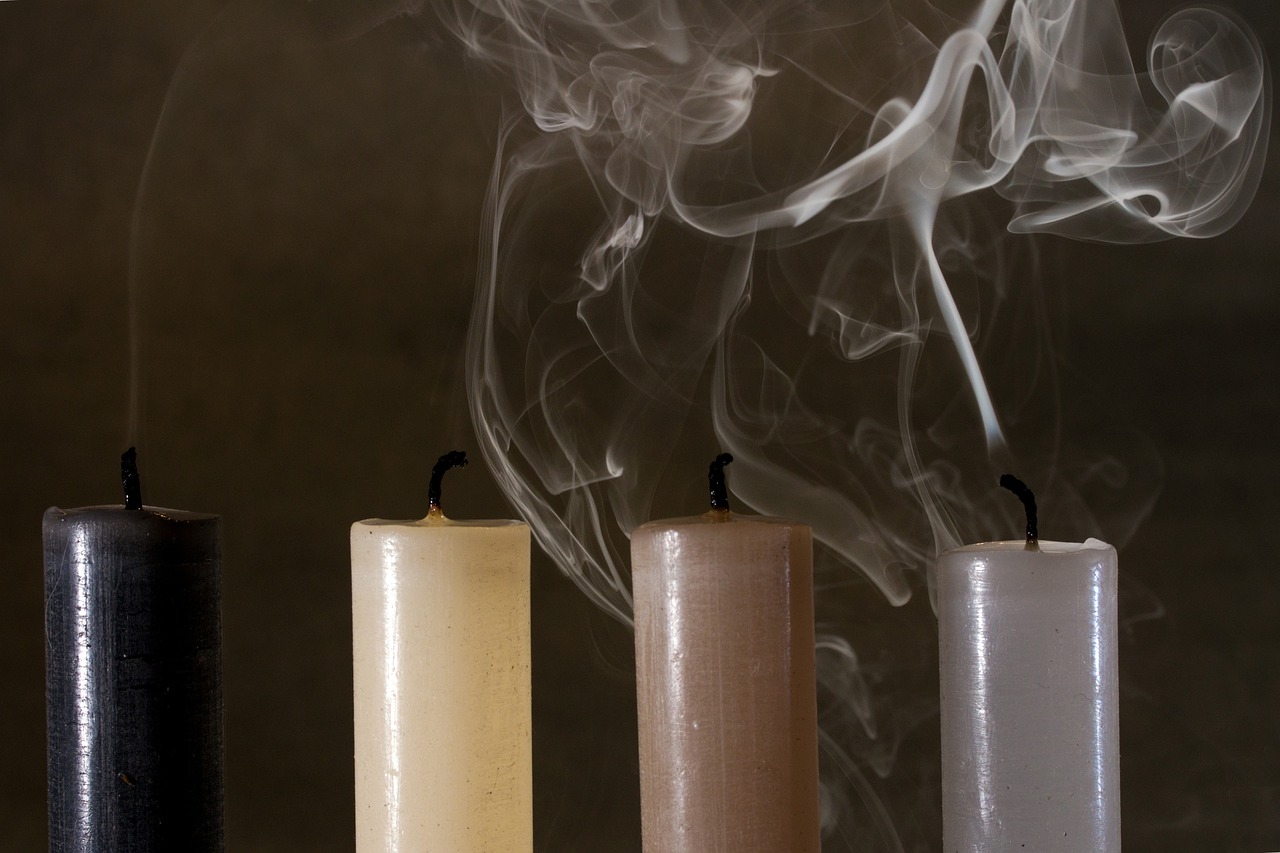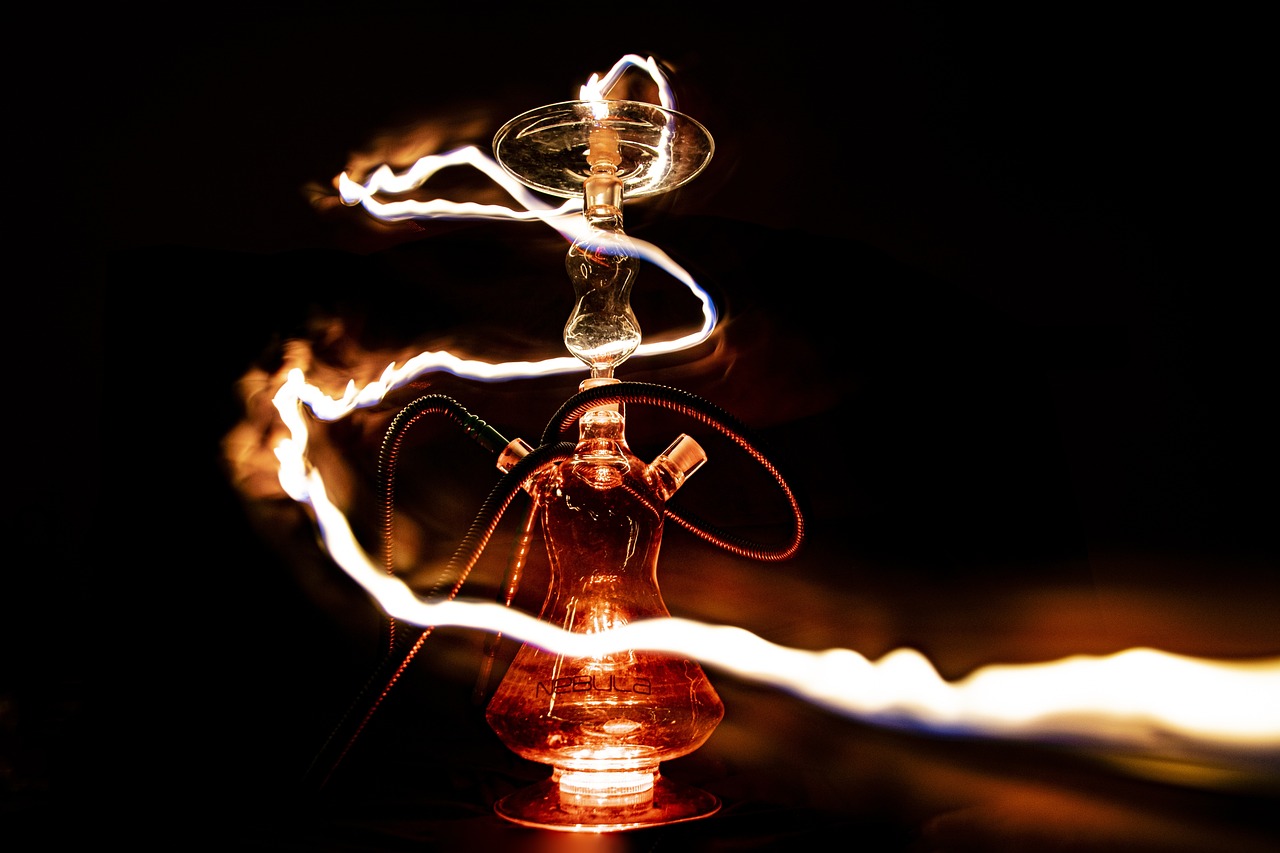Smoke Alarms: Locations and Installation Tips
This article provides essential information on the best locations for smoke alarms, installation tips, and maintenance practices to ensure optimal safety in your home. Smoke alarms are not just gadgets; they are life-saving devices that can alert you and your loved ones in the event of a fire. With the right installation and maintenance, these alarms can provide peace of mind and a crucial early warning system. In this guide, we will explore everything from the importance of smoke alarms to the best practices for placing them in your home.
Understanding the critical role smoke alarms play in fire safety can save lives. Did you know that according to the National Fire Protection Association (NFPA), three out of five fire deaths occur in homes without working smoke alarms? This statistic alone underscores the importance of having functional smoke detectors in your home. Smoke alarms can cut the risk of dying in a reported fire by half. They act as your first line of defense, providing a crucial alert that can allow you to escape safely. Installing smoke alarms is not just a good idea; it's a necessity that every homeowner should prioritize.
Different types of smoke alarms are available, each with unique features. When selecting a smoke alarm, you have mainly two options: ionization and photoelectric alarms. Understanding the differences between these two types can help you choose the best option for your home’s needs. Ionization alarms are typically more sensitive to fast-flaming fires, while photoelectric alarms are better at detecting smoldering fires. This knowledge can make a significant difference in your fire safety strategy.
Comparing ionization and photoelectric smoke alarms reveals their strengths and weaknesses. Ionization alarms use radioactive material to detect smoke particles, making them highly effective for quick bursts of flames. On the other hand, photoelectric alarms use a light beam that is disrupted by smoke particles, making them ideal for detecting slow-burning fires. Each type has its own set of advantages, and understanding these can help you make an informed decision. For instance, if you often cook or have a fireplace, you might want to consider the potential for smoke from those activities when choosing your alarms.
Ionization alarms are particularly effective for detecting fast-flaming fires, such as those caused by flammable liquids or paper. Therefore, it's advisable to install these alarms in locations where such fires are more likely to occur, such as:
- Near kitchens (but not directly in them to avoid false alarms)
- In hallways leading to bedrooms
- In living rooms and family areas
These placements ensure that you are alerted quickly in case of a sudden fire, giving you and your family the best chance to escape safely.
Photoelectric alarms excel at sensing smoldering fires, which can produce more smoke before bursting into flames. Ideal locations for these alarms include:
- In bedrooms and sleeping areas
- In areas with electrical appliances
- Near laundry rooms where lint could be a fire hazard
These placements help in catching those sneaky fires that often go undetected until it's too late.
Combination smoke alarms integrate both ionization and photoelectric technologies, providing a comprehensive solution for fire detection. These alarms are advantageous because they can detect both fast-flaming and smoldering fires, giving you broader coverage. When considering installation, think about placing them in central areas of your home, such as:
- Hallways
- Common living spaces
- Near the kitchen
While they may be slightly more expensive than single-type alarms, the added safety and peace of mind they provide can be worth the investment.
Placing smoke alarms in the right locations is crucial for early detection. The best spots to install smoke alarms throughout your home for maximum safety include:
Installing smoke alarms in or near sleeping areas is vital for alerting occupants during a fire. Imagine being in a deep sleep when a fire breaks out; without a smoke alarm, you may not wake up in time. This is why having alarms in bedrooms or just outside them is critical. It’s not just about safety; it’s about ensuring that everyone, including children and pets, has the best chance to escape unharmed.
Common areas, such as hallways and living rooms, are also essential for smoke alarm placement. These high-traffic spaces are where people gather, making them ideal for smoke detection. When installing alarms in these areas, ensure they are placed high on walls or ceilings, where smoke is likely to accumulate first. Regular maintenance, such as testing the alarms monthly and replacing batteries annually, will keep your smoke alarms functioning optimally.
Q: How many smoke alarms do I need in my home?
A: It is recommended to have at least one smoke alarm on each level of your home, including the basement and outside each sleeping area.
Q: How often should I replace my smoke alarms?
A: Smoke alarms should be replaced every 10 years, regardless of whether they are still functioning.
Q: What should I do if my smoke alarm goes off?
A: If your smoke alarm goes off, treat it as a real emergency. Evacuate the building immediately and call 911 once you are in a safe location.
Q: Can I test my smoke alarm with smoke?
A: No, it’s better to use the test button on the smoke alarm. Using smoke can lead to damage or malfunction.

Importance of Smoke Alarms
This article provides essential information on the best locations for smoke alarms, installation tips, and maintenance practices to ensure optimal safety in your home.
Understanding the critical role smoke alarms play in fire safety can save lives. Did you know that according to the National Fire Protection Association (NFPA), three out of five home fire deaths occur in homes without working smoke alarms? This staggering statistic highlights just how essential these devices are in protecting you and your loved ones. Smoke alarms are your first line of defense against the devastating effects of fire, providing early warning that can give you precious seconds to escape.
In fact, smoke alarms can reduce the risk of dying in a home fire by as much as 50% when they are correctly installed and maintained. They work by detecting smoke particles in the air, alerting you to potential danger before flames spread. This early detection is crucial; many fires can grow rapidly, and having even a few extra moments can make all the difference.
Here are some important facts that underscore the significance of smoke alarms:
- Smoke alarms should be installed in every sleeping room, outside each separate sleeping area, and on every level of the home, including the basement.
- Approximately 1/3 of home fire deaths occur in homes without smoke alarms.
- Most smoke alarms are powered by batteries, which need to be replaced at least once a year.
- Smoke alarms have a lifespan of about 10 years; after that, they should be replaced.
Moreover, smoke alarms can be equipped with features like voice alerts and interconnected systems that enhance their effectiveness. For instance, interconnected smoke alarms will sound an alert in every room when one detects smoke, ensuring that everyone in the house is aware of the danger, no matter where they are. This is particularly beneficial in larger homes where a single alarm might not be heard from all areas.
In summary, smoke alarms are not just devices; they are lifesavers. By understanding their importance and ensuring they are properly installed and maintained, you can significantly enhance the safety of your home and protect your family from the devastating effects of fire.
Different types of smoke alarms are available, each with unique features. This section discusses ionization and photoelectric alarms, helping you choose the best option for your home’s needs.
Comparing ionization and photoelectric smoke alarms reveals their strengths and weaknesses. This section explains how each type detects smoke and the scenarios where one may be more effective than the other.
Ionization alarms are particularly effective for detecting fast-flaming fires. This subsection outlines ideal locations and scenarios for installing ionization smoke alarms in your home.
Photoelectric alarms excel at sensing smoldering fires. This subsection describes where to install photoelectric alarms for optimal performance and safety.
Combination smoke alarms integrate both ionization and photoelectric technologies. This section discusses their advantages and considerations for installation in various areas of your home.
Placing smoke alarms in the right locations is crucial for early detection. This section details the best spots to install smoke alarms throughout your home for maximum safety.
Installing smoke alarms in or near sleeping areas is vital for alerting occupants during a fire. This subsection emphasizes why these locations are critical for safety.
Common areas, such as hallways and living rooms, are also essential for smoke alarm placement. This section outlines the best practices for installing alarms in these high-traffic spaces.
Here are some common questions regarding smoke alarms:
- How often should I test my smoke alarms? It’s recommended to test your smoke alarms at least once a month.
- What should I do if my smoke alarm goes off? If your smoke alarm sounds, evacuate immediately and call 911.
- Can I install smoke alarms myself? Yes, most smoke alarms come with easy-to-follow installation instructions.

Choosing the Right Smoke Alarm
When it comes to safeguarding your home from fire hazards, selecting the right smoke alarm is not just a choice—it's a necessity. With various types of smoke alarms available, understanding their unique features is essential to make an informed decision. The two most common types are ionization alarms and photoelectric alarms. Each type has its own strengths and weaknesses, and knowing these can help you determine which is best suited for your home’s specific needs.
Ionization alarms are designed to detect fast-flaming fires, which can occur suddenly and spread quickly. They work by using a small amount of radioactive material to ionize the air in the sensing chamber, creating a current that triggers the alarm when smoke disrupts it. This makes them particularly effective in scenarios where fires ignite rapidly, such as in kitchens or living rooms where flammable materials are present.
On the other hand, photoelectric alarms are better at sensing smoldering fires, which tend to produce a lot of smoke before bursting into flames. These alarms use a light beam and a sensor; when smoke enters the chamber and scatters the light, the alarm is triggered. This makes photoelectric alarms ideal for areas like bedrooms or hallways, where fires might start slowly, giving you more time to react.
To help you decide which alarm to choose, consider the following factors:
- Location: Where will the alarm be installed? Different areas may require different types of alarms.
- Fire Risk: What are the most likely fire risks in your home? Kitchens might benefit from ionization alarms, while bedrooms are better suited for photoelectric ones.
- Budget: While both types have their advantages, consider your budget and the long-term investment in safety.
For those who want the best of both worlds, combination smoke alarms are also available. These devices integrate both ionization and photoelectric technologies, providing comprehensive coverage against various types of fires. They can be a bit pricier, but investing in a combination alarm can offer peace of mind, knowing that you’re protected from both fast-flaming and smoldering fires.
Ultimately, the right smoke alarm for your home will depend on your specific needs and circumstances. Taking the time to assess your living space and understanding the characteristics of each type can significantly enhance your fire safety measures. Remember, the goal is not just to have smoke alarms installed, but to have the right alarms in the right places to ensure that you and your loved ones are safe.

Ionization vs. Photoelectric Alarms
When it comes to fire safety, understanding the differences between ionization and photoelectric smoke alarms can be a game-changer for your home. Both types of alarms serve the same ultimate purpose—keeping you safe—but they operate in distinctly different ways, which can significantly affect their performance in various fire scenarios. Ionization alarms use radioactive material to detect smoke, making them particularly sensitive to fast-flaming fires, such as those caused by paper or flammable liquids. On the other hand, photoelectric alarms utilize a light beam and a light sensor to detect smoke, which makes them more responsive to smoldering fires, like those that might occur with upholstery or electrical wiring.
To help you decide which type of alarm is best suited for your home, let's break down their strengths and weaknesses:
| Type of Alarm | Strengths | Weaknesses |
|---|---|---|
| Ionization |
|
|
| Photoelectric |
|
|
So, which one should you choose? The answer often lies in understanding the specific fire risks present in your home. If you have a lot of potential sources for fast-flaming fires—like a kitchen with several appliances or a garage filled with flammable materials—then ionization alarms may be your best bet. Conversely, if your home has areas where smoldering fires are more likely to occur, such as near upholstered furniture or electrical devices, then photoelectric alarms should be your primary choice.
However, many experts recommend a combination of both types of alarms to cover all bases. This way, you can benefit from the strengths of each technology while minimizing their weaknesses. You’ll not only enhance your safety but also give yourself peace of mind knowing you’ve taken comprehensive steps to protect your home and loved ones.

Best Uses for Ionization Alarms
When it comes to fire safety, understanding where to place ionization smoke alarms can make a significant difference in protecting your home and loved ones. These alarms are specifically designed to detect fast-flaming fires, which are often fueled by materials like paper, wood, and flammable liquids. This means that if you want to stay one step ahead of a potential disaster, you’ll want to consider installing ionization alarms in specific strategic locations throughout your home.
One of the best places to install ionization smoke alarms is in the kitchen. Why? Because kitchens are notorious for being the starting point of many house fires, often due to cooking mishaps. However, it’s essential to position these alarms at least 10 feet away from cooking appliances to avoid false alarms while still ensuring they’re close enough to detect any potential flames. Think of it as having a watchful guardian in your kitchen, ready to alert you at the first sign of trouble.
Another critical area for ionization smoke alarms is the living room or family room. These spaces often serve as gathering spots where people congregate, making them vital for early fire detection. Placing an ionization alarm here can give you peace of mind, knowing that if a fire were to break out—perhaps from an electrical fault or an unattended candle—everyone in the room would be alerted promptly.
In addition to the kitchen and living areas, consider installing ionization smoke alarms in the hallways leading to bedrooms. This placement is crucial because it allows the alarm to wake sleepers if a fire starts in another part of the house. Imagine being sound asleep when a fire ignites; having an ionization alarm in the hallway could mean the difference between a safe escape and a tragic outcome.
To summarize, the best locations for ionization alarms include:
- Kitchen: At least 10 feet away from cooking appliances.
- Living Room: Central gathering space for early detection.
- Hallways: Leading to bedrooms for alerting sleepers.
By strategically placing ionization smoke alarms in these locations, you’re not just complying with safety regulations; you’re actively enhancing your home’s safety. Remember, fire can spread rapidly, and having the right alarms in the right places can provide you with those precious extra seconds needed to escape or respond effectively. So, take the time to assess your home and ensure that your ionization alarms are perfectly positioned to safeguard your family.
Q: How often should I test my ionization smoke alarms?
A: It's recommended to test your smoke alarms at least once a month. This ensures they are functioning correctly and ready to alert you in case of a fire.
Q: How long do smoke alarms last?
A: Most smoke alarms have a lifespan of about 10 years. After that, they should be replaced to ensure optimal performance.
Q: Can I use both ionization and photoelectric alarms in my home?
A: Absolutely! Using both types of alarms can provide comprehensive coverage, as they detect different kinds of fires effectively.

Best Uses for Photoelectric Alarms
When it comes to fire safety, understanding the unique strengths of photoelectric smoke alarms can be a game changer. These alarms are particularly adept at detecting smoldering fires, which are often the silent killers in residential fires. Smoldering fires burn slowly and produce a lot of smoke before bursting into flames, making early detection crucial. This is where photoelectric alarms shine, as they can sense the larger smoke particles typically produced by such fires.
So, where should you install these life-saving devices? Here are some optimal locations:
- Bedrooms: Since most fires occur at night, having a photoelectric smoke alarm in or near sleeping areas is vital. It provides the necessary alert to wake occupants before smoke fills the room.
- Living Rooms: These spaces often contain various materials that can smolder for long periods, such as furniture and curtains. Installing photoelectric alarms here ensures that any slow-burning fire is detected early.
- Hallways: Positioning alarms in hallways leading to bedrooms can provide an additional layer of safety. If a fire starts in a common area, the alarm can alert residents before smoke reaches their sleeping quarters.
Another important consideration is the placement of photoelectric alarms in areas with higher humidity or dust, such as kitchens or bathrooms. While these environments can sometimes trigger false alarms, strategically placing them away from direct cooking areas or steam sources can minimize this risk while still providing effective monitoring.
In summary, photoelectric smoke alarms are best used in locations where smoldering fires are likely to occur. Their ability to detect smoke before it becomes a raging fire can make all the difference in ensuring safety in your home. By understanding where to place these alarms, you can significantly enhance your fire safety strategy.
- What is the difference between ionization and photoelectric smoke alarms?
Ionization alarms are better for detecting fast-flaming fires, while photoelectric alarms excel at sensing smoldering fires. - How often should I replace my smoke alarms?
It's recommended to replace smoke alarms every 10 years, regardless of whether they still work. - Can I use photoelectric alarms in the kitchen?
While they can be used, it's best to place them away from cooking appliances to avoid false alarms.

Combination Smoke Alarms
Combination smoke alarms are an innovative solution designed to enhance fire safety in your home by integrating both ionization and photoelectric technologies. This dual functionality allows these alarms to detect a wider range of fire types, making them an excellent choice for comprehensive fire protection. By understanding how these alarms work and where to install them, you can significantly improve your home's safety profile.
One of the standout features of combination smoke alarms is their ability to sense both fast-flaming fires and smoldering fires. Ionization alarms excel at detecting rapid, intense fires fueled by flammable materials, while photoelectric alarms are more adept at identifying slow-burning fires that produce a lot of smoke. This means that with a combination alarm, you're not just getting a single layer of protection; you're getting a robust system that can alert you to various fire scenarios.
When considering installation, it's essential to think about the layout of your home. Combination smoke alarms can be particularly effective in areas where different types of fires may occur. For instance, placing these alarms in kitchens, near bedrooms, and in living rooms can provide early warning signals, giving you and your loved ones precious time to escape in case of an emergency.
Here are some key advantages of using combination smoke alarms:
- Comprehensive Coverage: They detect multiple types of fires, enhancing safety.
- Fewer Devices Needed: You can reduce the number of alarms needed in your home, saving space and installation time.
- Cost-Effective: While they may have a higher upfront cost, the protection they offer may outweigh the expense.
However, it's crucial to consider some factors before installation. Combination smoke alarms may require more maintenance than standard alarms due to their complex technology. Regular testing and battery changes are vital to ensure they function correctly. Additionally, while they provide excellent coverage, it's still a good idea to consult local fire safety regulations or guidelines to ensure you're meeting all safety standards.
In conclusion, combination smoke alarms represent a significant advancement in fire safety technology. By installing them strategically throughout your home, you can create a safer environment for yourself and your family. Remember, when it comes to fire safety, being proactive can make all the difference!

Optimal Locations for Smoke Alarms
When it comes to ensuring the safety of your home, the placement of smoke alarms is absolutely crucial. You might be wondering, "Where should I put these little life-savers?" Well, let’s dive into the best spots to install smoke alarms that can significantly enhance your fire safety strategy. The goal is to have your smoke alarms in locations that provide the earliest warning possible, especially during the night when most fires occur.
First off, you should consider installing smoke alarms in every sleeping area. This means placing them in each bedroom and in the hallways outside these rooms. Why is this so important? Imagine being fast asleep when a fire breaks out. The sound of a smoke alarm could be the difference between life and death. According to the National Fire Protection Association (NFPA), nearly 60% of home fire deaths occur in homes without working smoke alarms, making this placement vital.
Next, let’s talk about common areas. These are spaces where people tend to gather, such as living rooms, family rooms, and hallways. Installing smoke alarms in these areas ensures that they can alert everyone in the home, regardless of where they are. It’s also wise to place alarms on every level of your home, including the basement and attic. Why? Because fires can start anywhere, and having alarms throughout your home creates a comprehensive safety net.
Additionally, you should avoid placing smoke alarms too close to kitchens or bathrooms. Why, you ask? This is because cooking fumes and steam can trigger false alarms, leading to alarm fatigue. Instead, consider installing them at least 10 feet away from cooking appliances. This simple tip can help ensure that your alarms remain functional and effective without unnecessary interruptions.
Here’s a quick breakdown of optimal locations for smoke alarms:
- In every bedroom
- Outside each sleeping area
- On every level of the home, including the basement
- In common areas like living rooms and hallways
- Avoid placing them near kitchens and bathrooms
Lastly, remember that smoke rises, so it’s best to install smoke alarms high on walls or ceilings. If you’re mounting them on the wall, keep them 4 to 12 inches from the ceiling, as this will allow them to detect smoke more effectively. For ceiling mounts, place them at least 4 inches away from the wall to avoid dead air spaces.
By following these guidelines, you can ensure that your smoke alarms are optimally placed to provide early warnings in the event of a fire. Remember, the more strategically you position your smoke alarms, the better protected you and your loved ones will be. In the end, investing a little time in proper placement can lead to a significant increase in safety and peace of mind.
Q: How many smoke alarms do I need in my home?
A: It is recommended to have at least one smoke alarm on every level of your home, inside each bedroom, and outside sleeping areas.
Q: How often should I test my smoke alarms?
A: You should test your smoke alarms at least once a month to ensure they are functioning properly.
Q: When should I replace my smoke alarms?
A: Smoke alarms should be replaced every 10 years, or sooner if they are not functioning correctly.
Q: Can I use a combination of ionization and photoelectric alarms?
A: Yes! Using a combination of both types can provide the best protection against different types of fires.

Smoke Alarms in Sleeping Areas
When it comes to fire safety, the placement of smoke alarms in sleeping areas is absolutely critical. Imagine this: you’re deep in sleep, and a fire starts somewhere in your home. Without a smoke alarm nearby, you might not wake up until it’s too late. According to the National Fire Protection Association, nearly 60% of fire-related fatalities occur in homes without working smoke alarms. This statistic alone should motivate every homeowner to prioritize the installation of smoke alarms in or near sleeping areas.
In a perfect scenario, smoke alarms should be installed in every bedroom, as well as outside each sleeping area, such as hallways leading to bedrooms. This ensures that even if a fire breaks out in a different part of the house, the alarm will still alert you while you’re in your room. It’s like having a safety net that catches you when you’re most vulnerable. Not only does this give you a fighting chance to escape, but it also provides peace of mind knowing that you’ve taken proactive steps to protect yourself and your loved ones.
Here are some essential tips for installing smoke alarms in sleeping areas:
- Install alarms on the ceiling: Smoke rises, so placing the alarm on the ceiling gives it the best chance of detecting smoke early.
- Keep alarms away from vents: Avoid placing alarms too close to air vents or ducts, as airflow can interfere with smoke detection.
- Test regularly: Make it a habit to test your smoke alarms every month. A simple press of the button can ensure that they’re functioning properly.
- Replace batteries: Change the batteries at least once a year, and replace the entire smoke alarm every 10 years.
It’s also important to consider the types of smoke alarms you choose for these locations. While ionization alarms are great for detecting fast-flaming fires, photoelectric alarms are better at sensing smoldering fires, which can be more common in bedrooms due to the presence of bedding and furniture. For optimal safety, consider using combination smoke alarms that integrate both technologies. This way, you can have the best of both worlds, ensuring that you’re covered no matter what type of fire may occur.
In conclusion, installing smoke alarms in sleeping areas is not just a recommendation; it’s a necessity. By taking these precautions, you’re not only protecting yourself but also your family. Remember, a few minutes of preparation can make all the difference in an emergency. So, take the time today to check your smoke alarms and ensure they’re strategically placed in your sleeping areas. Your safety is worth it!
Q: How many smoke alarms do I need in my home?
A: At a minimum, you should have one smoke alarm on every level of your home, inside each bedroom, and outside sleeping areas.
Q: How often should I test my smoke alarms?
A: You should test your smoke alarms at least once a month to ensure they are functioning properly.
Q: What should I do if my smoke alarm goes off?
A: If your smoke alarm goes off, evacuate the building immediately and call emergency services. Do not re-enter the home until it has been deemed safe.
Q: Can I use a smoke alarm that is more than 10 years old?
A: No, smoke alarms should be replaced every 10 years to ensure they are functioning correctly.

Smoke Alarms in Common Areas
When it comes to fire safety, common areas in your home play a pivotal role in ensuring everyone’s safety. These spaces, which include hallways, living rooms, and dining areas, are where family members often gather, making them critical points for smoke alarm installation. Imagine a scenario where a fire breaks out in the kitchen or living room; if there’s no smoke alarm in the vicinity, the chances of timely detection decrease significantly, potentially putting lives at risk.
Installing smoke alarms in common areas not only enhances safety but also provides peace of mind. It's essential to place these alarms in locations where they can detect smoke as quickly as possible. For instance, consider installing alarms:
- In hallways leading to bedrooms, ensuring that everyone is alerted while they sleep.
- In the living room, where most family activities take place, ensuring immediate detection of potential fires.
- Near the kitchen, but not too close to avoid false alarms from cooking.
In addition to placement, consider the number of smoke alarms you need. A single alarm may not suffice for larger homes or those with multiple levels. A good rule of thumb is to install at least one smoke alarm on every floor, including the basement. This way, if a fire starts in one area, you can ensure that the alarm will sound, providing crucial time for evacuation.
Furthermore, it's important to choose the right type of smoke alarm for common areas. Ionization alarms are great for detecting fast-flaming fires, while photoelectric alarms excel at sensing smoldering fires. By using a combination of both types, you can maximize your safety. This is particularly effective in common areas where different fire scenarios may occur, such as a living room with electronics and a fireplace or a kitchen with various cooking appliances.
Lastly, regular maintenance of smoke alarms is vital. Test your alarms monthly, replace batteries at least once a year, and replace the entire unit every 10 years. Keeping your smoke alarms in peak condition ensures they will function properly when you need them the most, ultimately keeping your family safe from fire hazards.
Q: How many smoke alarms do I need in my home?
A: It is recommended to have at least one smoke alarm on every level of your home, including the basement and outside each sleeping area.
Q: Where should I install smoke alarms in my home?
A: Install smoke alarms in common areas, hallways leading to bedrooms, and near the kitchen, but avoid placing them directly in cooking areas to prevent false alarms.
Q: How often should I test my smoke alarms?
A: You should test your smoke alarms at least once a month to ensure they are functioning correctly.
Q: When should I replace my smoke alarms?
A: Smoke alarms should be replaced every 10 years, or sooner if they do not respond properly during testing.
Frequently Asked Questions
- What is the best location for installing smoke alarms in my home?
The best locations for smoke alarms are in or near sleeping areas, as well as in common areas like hallways and living rooms. This ensures that occupants are alerted during a fire, especially when they are asleep.
- How many smoke alarms do I need in my home?
It's recommended to have at least one smoke alarm on every level of your home, including the basement. Additionally, install alarms in each sleeping area and outside each separate sleeping area to maximize safety.
- What is the difference between ionization and photoelectric smoke alarms?
Ionization alarms are best for detecting fast-flaming fires, while photoelectric alarms excel at sensing smoldering fires. Depending on the type of fire risk in your home, you may choose one type or even opt for combination alarms that incorporate both technologies.
- How often should I test my smoke alarms?
You should test your smoke alarms at least once a month. Just press the test button on each unit to ensure they are functioning correctly. It's a quick and easy way to maintain your fire safety!
- When should I replace my smoke alarms?
Most smoke alarms have a lifespan of 10 years. If your alarm is nearing this age, it's time to replace it. Always check the manufacturer's instructions for specific guidance on replacement timelines.
- Can I install smoke alarms myself?
Yes, installing smoke alarms is a straightforward process that many homeowners can do themselves. Just follow the manufacturer's instructions carefully. However, if you’re not comfortable with DIY projects, consider hiring a professional.
- What should I do if my smoke alarm goes off?
If your smoke alarm goes off, treat it as a real emergency. Evacuate the premises immediately and call emergency services. Do not assume it's a false alarm until you have verified that there is no fire.
- Are combination smoke alarms worth it?
Absolutely! Combination smoke alarms that use both ionization and photoelectric technologies can provide comprehensive protection against different types of fires, making them a smart choice for your home.



















